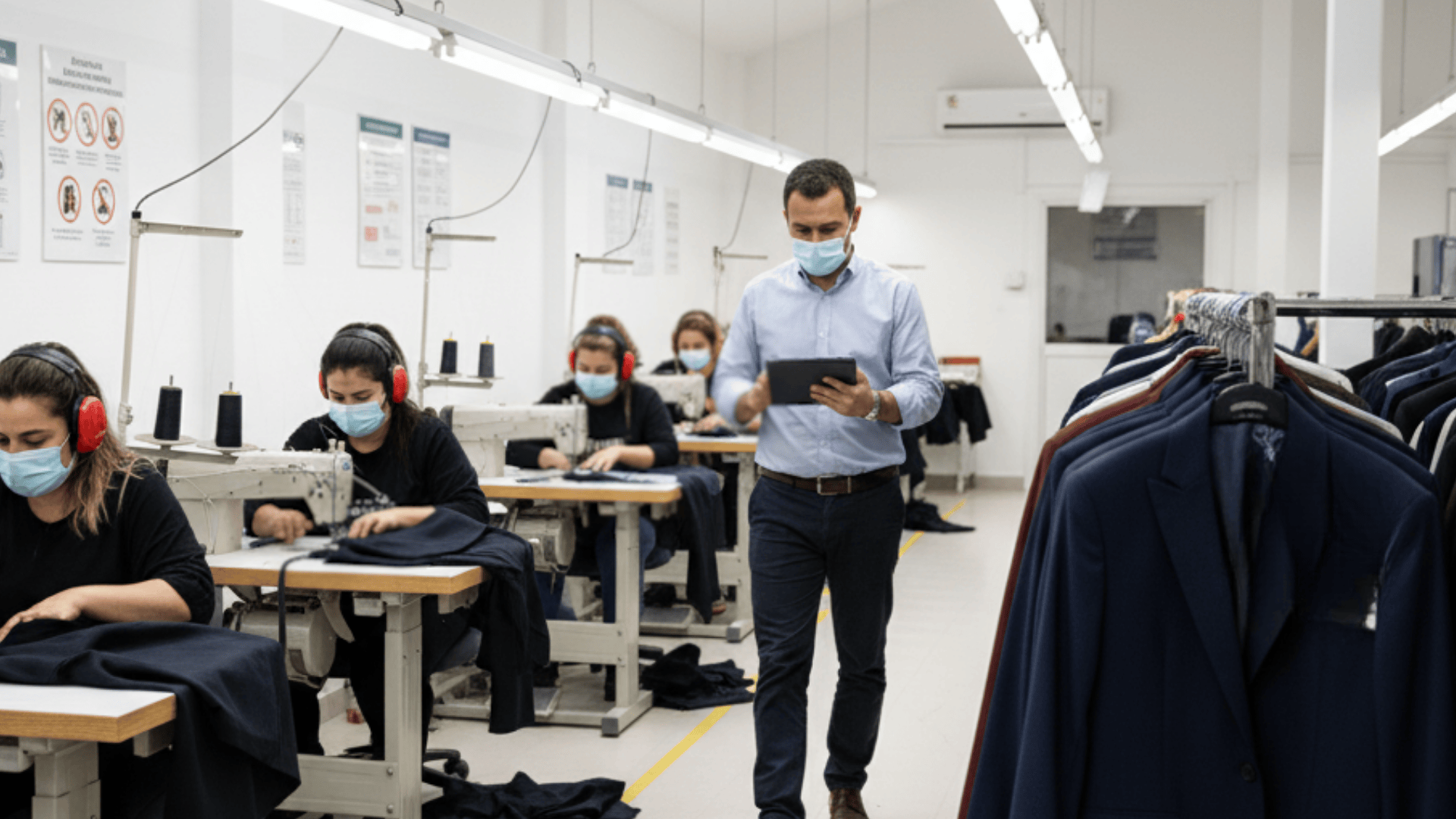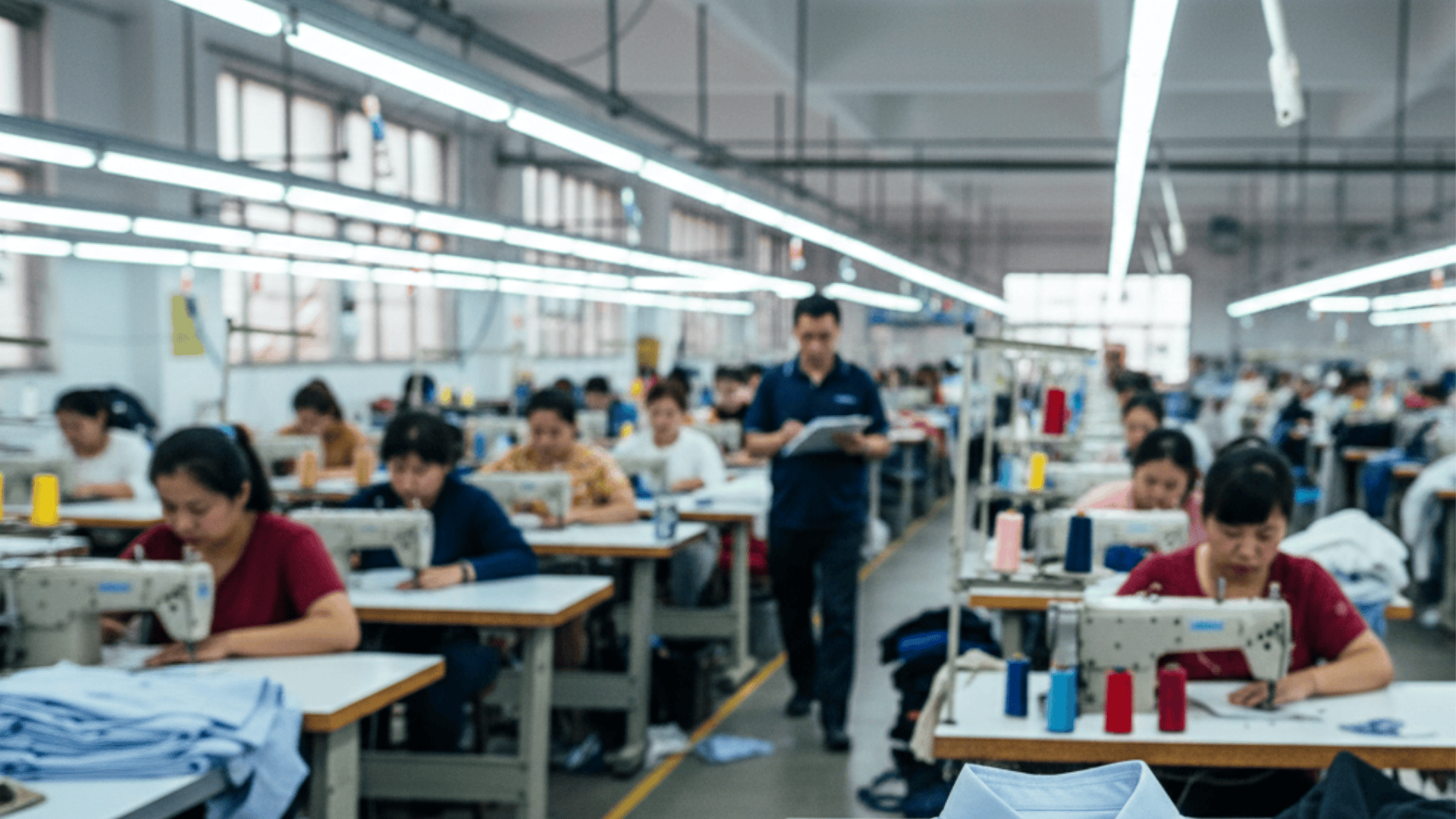Every single second, a garbage truck full of clothes gets burned or dumped into a landfill. That’s not an exaggeration; it’s actually happening right now.
The fashion industry produces about 10% of all global carbon emissions, making it one of the planet’s biggest polluters.
And Zara? They’re right at the center of it all. Walk past any Zara store and you’ll notice something interesting. The window displays change constantly.
That constant change isn’t random; it’s the result of a carefully designed system that keeps churning out new clothes at an incredible speed.
So, is Zara fast fashion? That’s what many shoppers want to know, and it matters way more than you might think.
What Is Fast Fashion?
Before we can figure out if Zara is fast fashion, we need to understand what fast fashion actually is.
Fast fashion is a way of making and selling clothes super quickly and cheaply. Think of it like fast food, but for your wardrobe.
Just like a burger joint can whip up your meal in minutes, fast-fashion brands can take a design idea and get it into stores in just a few weeks.
Fast fashion has some telltale signs:
- Quick production cycles – designs go from drawing board to store rack in weeks, not months
- Low prices – keeping costs down so more people can afford trendy pieces
- Constant new arrivals – refreshing inventory every few weeks to keep shoppers coming back
- Trend copying – spotting what’s popular and making similar versions quickly
- High turnover – clothes designed to be worn for a season or two, then replaced
Fashion designers at these companies keep their eyes on the latest trends: what celebrities are wearing, what’s popular on social media, and what walked down the runway at fashion week.
Then they create similar styles and produce them really fast.
Zara’s Brand: How It Works

Zara started small. Back in 1975, Amancio Ortega opened a little clothing shop in Spain with a simple but powerful idea: make fashionable clothes that regular people could afford.
Today, Zara has grown into a global giant with stores in cities around the world.
But Zara doesn’t operate like traditional clothing brands. They use something called vertical integration, which basically means Zara controls most of its own production process.
Instead of relying totally on outside factories, Zara makes a lot of its clothes in nearby factories in Spain, Portugal, and Morocco.
Zara’s system runs on three key principles that work together like a well-oiled machine.
They produce smaller batches instead of massive quantities, which means less waste if something doesn’t sell.
Store managers feed real-time data back to headquarters about what’s flying off the racks and what customers are asking for, allowing designers to pivot almost instantly.
Is Zara Fast Fashion? Yes and Here’s Why
The short answer is yes. Zara fits the definition of fast fashion in pretty much every way.
1. Rapid Design-to-Store (~2 Weeks)

While traditional fashion brands need four to six months, Zara delivers new designs in about 15 days.
In those two weeks, they spot a trend, sketch it, produce it in nearby factories, and get it on store racks; faster than you can finish a school project.
2. Constant Newness

Zara brings in fresh styles multiple times per week with deliberately small batches.
This “engineered scarcity” means that a cute jacket might not be there next week, pushing shoppers to buy now and return often.
3. Runway Trends at Accessible Prices

If a designer shows $800 oversized blazers that go viral, Zara creates a similar version for $70 within weeks.
This quick interpretation of high-end looks drives massive sales without expensive advertising.
4. Data-Driven, Integrated Supply

Store managers track what’s selling and send real-time data to designers. Because Zara produces in nearby Spain, Portugal, Turkey, and Morocco, they can quickly adjust and restock while competitors plan next season.
5. Scale + Speed Logistics

Zara’s centralized distribution handles a huge assortment across thousands of stores worldwide. They sometimes use expensive air freight just to maintain their twice-weekly delivery pace.
When you put it all together, the quick production, the trend copying, the constant new arrivals, and the emphasis on speed, it’s clear that Zara is definitely a fast fashion brand.
They’re actually one of the brands that helped define what fast fashion means today.
Zara’s Impact on the Fashion Industry
Zara didn’t just join the fast-fashion game. They helped create it. Before Zara, the fashion industry moved much more slowly.
Zara demonstrated to the world that it was possible to design, produce, and sell clothes at lightning speed.
Other brands took notice. Soon, companies like H&M and Forever 21 started adopting similar strategies. This shift changed how we all shop.
We started expecting constant newness and got used to buying clothes more often while paying less for them.
1. The Environmental Cost

The fashion industry is one of the biggest polluters in the world. The main problems include:
- Overproduction – Fast-fashion brands make way more clothes than we need, with about 30% never even getting sold
- Resource use – Producing one cotton t-shirt can use about 2,700 liters of water
- Waste – The average piece of clothing gets worn only about 7 times before being tossed
- Short lifespans – Fast-fashion items often aren’t made to last, so you have to replace them sooner
- Carbon emissions – Making, shipping, and disposing of clothes create greenhouse gases
Zara has launched some sustainability programs, like clothing collection boxes in stores.
However, critics point out that as long as brands keep producing massive amounts of new clothes constantly, the environmental impact remains huge.
2. Animal Welfare

The fast-fashion industry’s rapid production often comes at a cost to animals too.
Many brands use materials like leather, wool, and fur without providing clear information about their origins or the treatment of the animals from which they come.
While Zara has banned certain materials like angora (rabbit fur) and committed to using only traceable wool by certain dates, animal rights groups continue pushing for more transparency.
3. Labor Practices

Behind every $15 shirt is a real person who made it, and fast fashion’s low prices often mean low wages for workers.
Factory employees in countries where clothes are manufactured sometimes work long hours in unsafe conditions for very little pay.
Zara faced criticism in 2017 when workers in Turkey left notes in clothing asking “Who made my clothes?” to highlight unfair labor practices.
While Zara’s parent company, Inditex, has codes of conduct and audit programs for suppliers, watchdog groups say enforcement remains inconsistent.
Better Alternatives
If you’re concerned about the environmental side of fast fashion, there are plenty of ways to build a more sustainable wardrobe:
- Choose sustainable brands like Patagonia, Eileen Fisher, People Tree, or Girlfriend Collective. These companies focus on eco-friendly materials, fair wages, and clothes designed to last.
- Shop secondhand through thrift stores or online platforms like Poshmark and ThredUp. This gives clothes a second life without supporting new production.
- Buy less, choose well – Save up for fewer, better-quality pieces that will last longer.
- Take care of what you have – Wash clothes appropriately, follow care instructions, and repair items instead of tossing them.
Bottom Line
Yes, Zara is fast fashion. They check all the boxes: super-fast production cycles, trend imitation, affordable prices, constant new arrivals, and a business model built on speed.
What does this mean for you? It depends on what matters most. Zara offers trendy, affordable clothes with constantly refreshing styles. But fast fashion also comes with environmental concerns that are hard to ignore.
Maybe you’ll shop there occasionally, but invest more in sustainable brands. Maybe you’ll buy secondhand instead.
Maybe you’ll keep shopping at Zara, but buy less and take better care of what you purchase.
There’s no single “right” answer. What matters is that you now know the facts. Every purchase is a vote for the kind of world you want to live in. Choose wisely.







